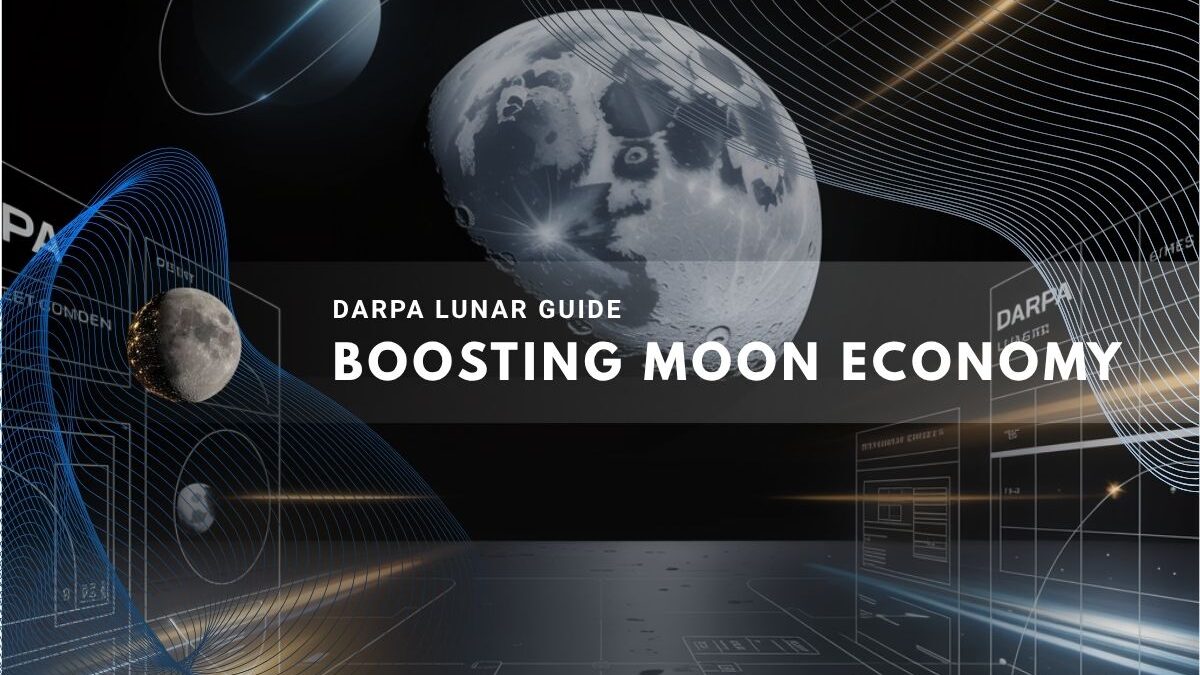The U.S. Defense Advanced Research Projects Agency (DARPA) is working to encourage economic activities on the moon. There is increasing interest in making a business case for lunar mining, supported by a recent study that outlines steps to connect Earth’s economy with lunar opportunities.
New DARPA LunA-10 Initiative for Lunar Infrastructure
The LunA-10 initiative is a 10-year capability study funded by DARPA, starting from late 2023. It focuses on creating foundational technologies and scalable, adaptable infrastructure to support a sustainable lunar economy by the mid-2030s. The study involves 14 companies, including major aerospace and technology firms, each contributing to areas like power generation, communications, positioning/navigation/timing (PNT), and surface mobility systems. One example is Honeybee Robotics’ LUNARSABER system, designed to supply solar power and communications for continuous lunar operations even in dark craters.[1][2][3]
Commercial Lunar Economy Field Guide
Released in mid-2025 by Air University Press and edited by DARPA program manager Michael Nayak, the Field Guide outlines a comprehensive vision for industrial activity on the Moon over the next decade. It consolidates research from over 130 experts, covering 23 chapters addressing technologies, services, market challenges, and infrastructure requirements necessary to launch a lunar economy. Central themes include power networks, communications, data services, and PNT systems tailored for lunar conditions.[4][5]
Technical and Economic Challenges
Technical and economic challenges for the lunar economy center on the high costs and complexities of space insurance and the extreme lunar temperature swings. Space insurance remains expensive and difficult to obtain due to high risks, limited market capacity, and uncertain liability in orbit, posing a significant barrier for commercial ventures. Meanwhile, the need to manage the Moon’s intense thermal extremes is critical to enable continuous, reliable industrial operations beyond daylight hours.[3][4][10]
Space Insurance
Space insurance is identified as a major cost driver and barrier for lunar commercial ventures. Current insurance models struggle with the risks unique to lunar operations, which complicates investment. Companies like ispace, in collaboration with major insurers such as Mitsui Sumitomo, have begun developing specialized “lunar insurance” policies covering missions from launch through lunar surface operations, highlighting the evolving insurance landscape crucial for sustained lunar business.[6][7][8]
Temperature Management
The Moon’s extreme temperature fluctuations present hardware challenges. Lunar industrial equipment must operate effectively in intense heat during lunar day and extreme cold during night or in permanently shadowed regions. Solutions require advanced thermal control systems to allow 24/7 operations beyond sunlight hours, addressing a fundamental hurdle in maintaining continuous industrial activity.[9][6]
Mining: The Core Economic Driver
Mining is currently the most promising commercial application. Resources potentially valuable for export or in-situ utilization include rare earth elements and platinum group metals. However, questions remain about the concentration, accessibility, and economic viability of extracting these resources due to limited data on lunar geology compared to Earth. DARPA’s Lunar Assay via Small Satellite Orbiter (LASSO) program is a new effort to map resource locations and quantities by deploying small satellites in very low lunar orbits. These satellites will collect high-resolution data, including mapping water ice, a key resource for future lunar settlements.[10][11][12][3][9]
Broader Vision and Outlook
DARPA’s program emphasizes enabling commercial industry in ways that complement government-led lunar exploration, not replace it. The vision includes transforming the Moon into a vibrant marketplace, serving as a launchpad for further space exploration and a source of critical materials and services. While the path forward is challenging, the Field Guide and LunA-10 provide a roadmap for leveraging technology, investments, and industrial partnerships to establish a robust lunar economy by 2035.[13][5][9]
